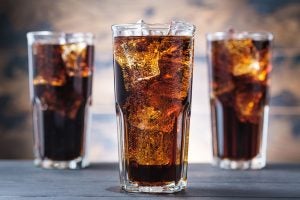Ideas for an article sometimes comes from unexpected places. Recently I was reading the comics in the local newspaper when inspiration struck. The comic strip FRAZZ by Jeff Mallet is about an elementary school janitor named Frazz who interacts with teachers and students with positive thoughts and observations. He is an environmentalist and a skinny exercise geek.
In the August 17 strip, portly teacher Mr. Burke is holding a bag of corn on the cob and saying to Frazz, “You can boil it, you can steam it, you can roast it, and you can grill it. You can do anything with corn but ruin it.” Then Frazz replies, sarcastically, “Let’s hope no one figures out a way to make a cheap, unhealthy syrup out of it.”
And there it is. Frazz states the general public belief that corn in its many processed forms is unhealthy. Corn syrup is 100 percent glucose, and Frazz (and the general public) do not understand that glucose is the body’s energy source and the only usable sugar found in blood. Other sugars that may be found in the blood, such as fructose and lactose, are on their way to the liver to be converted to glucose before our bodies can use them.
Glucose is rather easily made from corn starch, as corn starch (and starch from potatoes, wheat, and other plants) is made from thousands of glucose molecules hooked together in a long chain. Corn syrup should not be confused with high-fructose corn syrup (HFCS), which is made from glucose by employing an enzyme to convert 50 percent to 55 percent of the glucose to fructose. Why do this conversion? Fructose is much sweeter than glucose, and the conversion makes HFCS a cheaper sweetener than cane or beet sugar for addition to drinks and foods. Cane and beet sugar is sucrose (table sugar). Sucrose is a disaccharide — a combination of two sugars, the monosaccharides glucose and fructose. The proportion of each sugar is 50-50, or nearly the same as HFCS.

If HFCS has the same sugars as sucrose in nearly the same proportions, why the common belief that HFCS is bad? Mainly it is a belief manufactured in the press, though some research claims it is more rapidly absorbed by the body, and therefor overloads the liver, which must convert it to glucose. The reason for such a claim is that the fructose in HFCS is unattached to the glucose and therefore more readily available for absorption by the gut. Other research claims sucrose is broken into its component glucose and fructose by saliva and stomach acids long before it reaches the gut. Conclusion: HFCS is no worse an added sugar than sucrose.
Is corn syrup unhealthier than maple syrup? Maple syrup is about 66 percent sucrose, which means it is 33 percent glucose and 33 percent fructose. On a volume basis, the two syrups would be close to the same sweetness. Maple syrup does contain some minerals and antioxidants. My choice for pancakes would be maple syrup. Both are unhealthy if you use too much.
Another name for glucose is dextrin, so if you see that on the label the food probably contains sugar from corn. It is also sometimes called beer sugar, as corn syrup is sometimes used to feed the yeast that do the fermentation.
Related: Judge rules Anheuser-Busch must revise ads about corn syrup
Another fact I find interesting is that glucose comes in two molecular arrangements or isomers: a “D” (dextrin) isomer that polarizes light clockwise, and an “L” isomer that is a mirror image of D and polarizes light anticlockwise. Dextrin is the only form that occurs naturally; the L form can only be produced in the laboratory. Both forms taste sweet, but only the D form is metabolized by living things. The L form has been explored as an artificial sweetener but is too expensive to produce.
This “handedness” of molecules (L=left and D=right) is common among organic chemicals. They have the same chemical formula but are mirror images, like right and left hands. Living organisms can tell the difference, and almost exclusively use one orientation of a chemical. For instance, only L-amino acids are used in the production of proteins, whereas we have just discussed the use of only D-glucose for fuel.
“Handedness” can be a problem in manufacturing drugs. Manufacturing processes tend to produce both versions of a chemical in equal amounts. Sometimes only one version is effective while the other version can be ineffective or cause serious side effects.
Jack DeWitt is a farmer-agronomist with farming experience that spans the decades since the end of horse farming to the age of GPS and precision farming. He recounts all and predicts how we can have a future world with abundant food in his book “World Food Unlimited.” A version of this article was republished from Agri-Times Northwest with permission.



